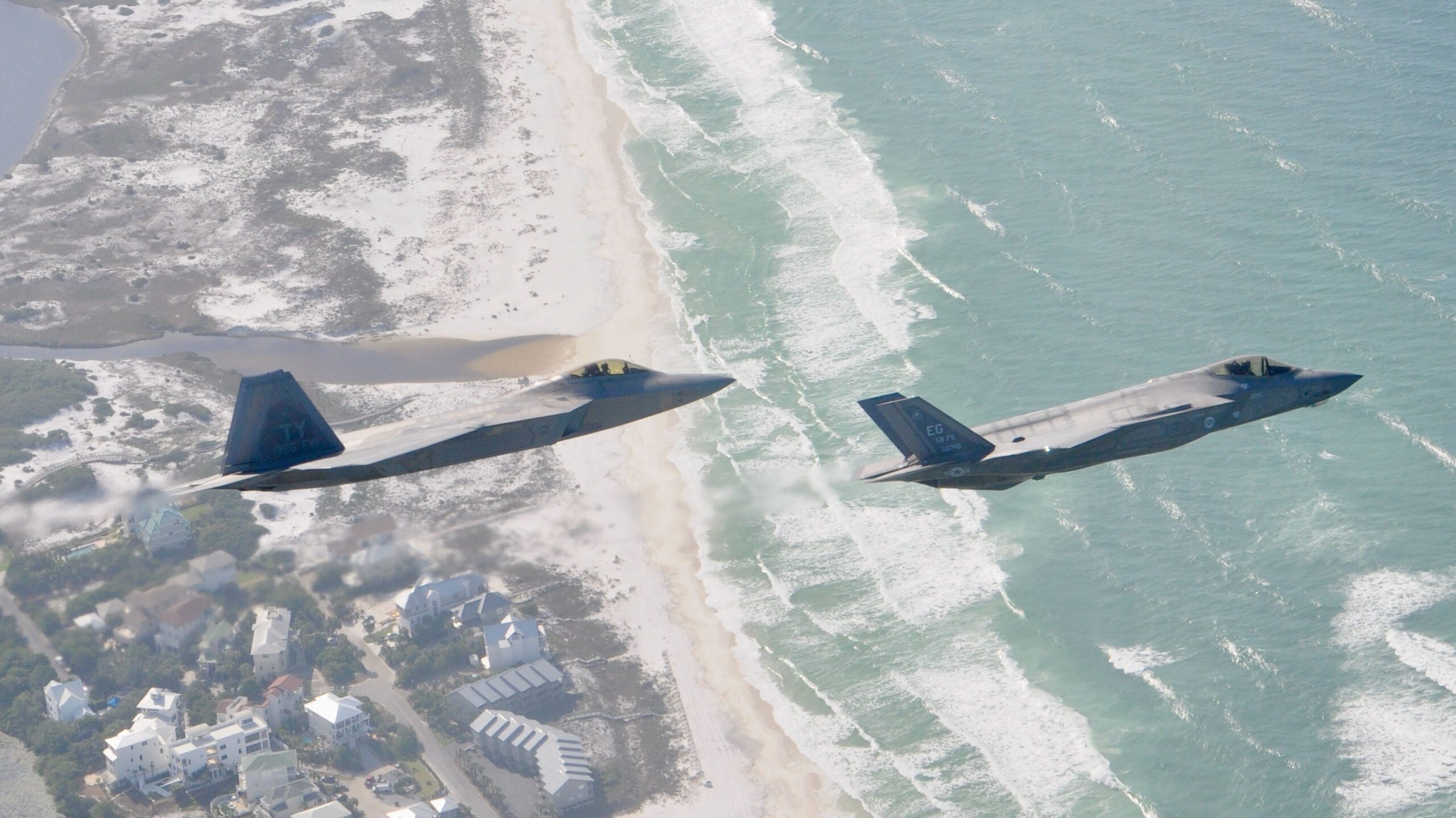Tyndall Air Force Base in Florida, which was devastated by Hurricane Michael in 2018, is formally set to become a critical hub in the U.S. Air Force’s F-35A Joint Strike Fighter enterprise, receiving three new squadrons of stealth fighters in the coming years. Plans, which first emerged just months after the storm ravaged the base, have been approved that will see 72 Lightning IIs get added to the base’s 325th Fighter Wing, beginning in 2023.
The Air Force announced late yesterday that officials had formally chosen Tyndall to host the three F-35 squadrons. The advantages offered by the base, located on the Gulf of Mexico in the Florida Panhandle, include “infrastructure capability, quality of life for airmen, and airspace,” according to an official release from the service.

“Adding F-35 squadrons at Tyndall ensures airmen will continue to have a strategic advantage as the 325th Fighter Wing enhances fighter training and combat readiness,” said Air Force Colonel Greg Moseley, the 325th’s commander.
The base had originally been earmarked as a candidate location for the three squadrons after it was hit by Hurricane Michael. The devastation wrought by that storm required Tyndall’s aircraft — including its highly prized F-22 Raptors — to be dispersed to other bases across the country while a major renovation program began. That rework, which included replacing 100 percent of the base’s housing and infrastructure to support daily life, was done under the Pentagon’s Installation of the Future initiative, with the Florida facility becoming the flagship for this initiative.
Although then Vice President Mike Pence tweeted in 2019 that F-35s would be based at Tyndall, the Air Force had remained quiet on the issue. Meanwhile, the redesign took into account the particular demands of F-35 basing, reflecting the fact that the stealth fighter requires its own specialized infrastructure and services. Despite that, officials still needed to wait on the results of a “thorough environmental impact analysis” as part of the National Environmental Policy Act before Tyndall could be green-lit for the Joint Strike Fighters.
The addition of F-35s is certainly in-keeping with Tyndall’s Installation of the Future ethos, which even extends to the “robot dogs,” or Q-UGVs, that patrol the perimeters, the first of their kind to be used on regular Department of Defense operations.
Meanwhile, the first F-35As for the 325th FW’s three new squadrons are scheduled to start arriving at Tyndall in September 2023. Each squadron is set to receive 24 aircraft in total, at which time full mission capability will be declared.

One of the huge benefits offered by Tyndall is its proximity to the Gulf Range Complex, which provides over 130,000 square miles of training airspace over the Gulf of Mexico. The range is among only a few in the United States that can handle large-scale air combat training and allows for supersonic speeds.
“Direct access to this range is essential for fifth-generation fighter readiness and for live-fire testing and training,” the Air Force release stated, while Colonel Moseley described the airspace as a “national treasure.” He added: “The type of training conducted here integrates the [Department of Defense’s] most advanced aircraft and builds a dynamic force.”
The training opportunities at Tyndal, now also include contractor-operated aggressor Mirage F1 fighter jets, flown by the Airborne Tactical Advantage Company, or ATAC. The first of these began to arrive at the base last December 14. The detachment of around six aircraft is expected to fly more than 1,100 sorties to provide adversary air support, although one of the French-made fighters was involved in a landing accident last month.

There will also be the potential for useful synergy, with F-35s at Tyndall and at nearby Eglin Air Force base, home to the Air Force’s main F-35 training unit, the 33rd Fighter Wing. The 33rd also presently supports the F-35 training activities of a number of foreign operators.
Other factors, too, will have played into the decision to keep Tyndall open, and then to secure its future with the F-35. The base supports around 20,000 jobs in the communities surrounding it and pumps millions of dollars into the local economy each year. With this in mind, state politicians and Florida’s members of Congress campaign to keep the facility open. There remains a question, however, as to whether investing hundreds of millions of dollars into renovating this base for the demands of the F-35 makes long-term sense — after all, more storms hit Florida than any other U.S. state and the risk of another event like Hurricane Michael is undiminished.
With the forthcoming arrival of the Joint Strike Fighter, attention will now turn to what happens to the other stealth jets at the base. The Air Force previously unveiled a plan to permanently reassign the F-22s from the 325th’s 95th Fighter Squadron, an operational unit, to other Raptor squadrons at Langley Air Force Base in Virginia, Joint Base Elmendorf-Richardson in Alaska, and Joint Base Pearl Harbor-Hickam in Hawaii. Meanwhile, in March 2019, the Air Force formally designated Langley as its preferred future home of the 43rd Fighter Squadron, the F-22 Formal Training Unit (FTU).
The incoming F-35 squadrons at Tyndall could help seal the deal on the move of the F-22s from the 43rd and 95th Fighter Squadrons to Langley. That base in Virginia would then become something of a Raptor “superbase,” since it already hosts two squadrons of the jets.

With plans now in place to field three full squadrons of Joint Strike Fighters at Tyndall, the base’s remarkable recovery will continue and its future should be secured for years to come.
Contact the author: thomas@thedrive.com
